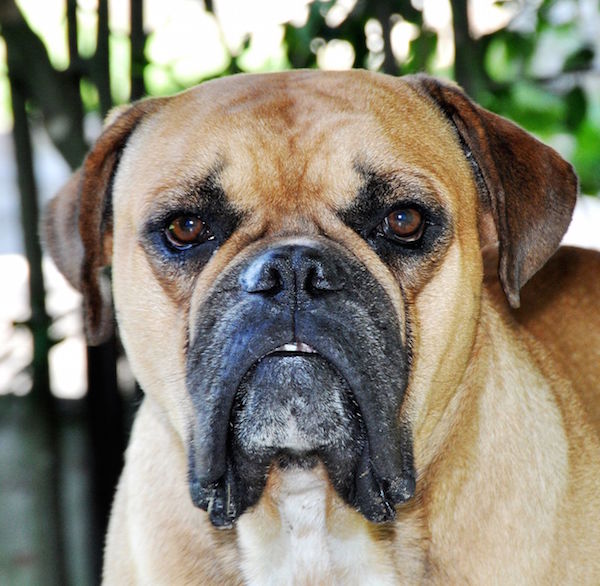
You just never know where a purebred dog will show up. Who would have guessed that ancient English Bulldogs were brought to Brazil by European immigrants in the 16th century? Or that these Bulldogs, further bred to adapt to Brazil’s climate and lifestyle, would lead to a new breed?
The early dogs were used to work cattle, as were their offspring, Over time, the Bulldogs developed through natural selection. Low statured dogs didn’t fare well over long distances or when immobilizing bulls, while tall dogs were vulnerable to horns and backward kicks. The breed’s name, too, morphed into a Portugese version of “bulldog” which lead to names like “burdogue,” or “bordoga.” Today, we know the dog you see here as the Buldogue Campeiro, Campeiro Bulldog (which literally translates to “rural bulldog”) or Brazilian Bulldog. By any name, these were brave and tough dogs, and they had to be. They were used to capture (and hold) wild, and often irate, cattle in rough terrain, often after traveling for long, hot journeys.The breed was also worked in slaughterhouses where they were especially useful for holding furious bulls when necessary. This kind of work called for a dog with incredible power, strength, and stamina, but with the agility to dodge hooves.
Campeiro are described as docile to their owners and other dogs in their pack (Brazilian Bulldogs were typically worked in groups of five), but remote, and even aggressive towards strangers. “Obstinant” is a word we came across more than once when reading up on the breed, not a bad trait to have when called to overcome limits in dealing with animals so much larger than themselves.
The Buldogue Campeiro has been nationally recognized by the CBKC (confederagao Brasileira de Cinofilia), the National Brazilian Kennel Club, but as yet, no other registry. It will be tough going because the Buldogue Campeiro is considered to be one of the rarest breeds in the world.
Thumbnail image of a three year old male Bulldog Campeiro by André Lage Freitas and shared under the Creative Commons Attribution-Share Alike 3.0 Unported license.
